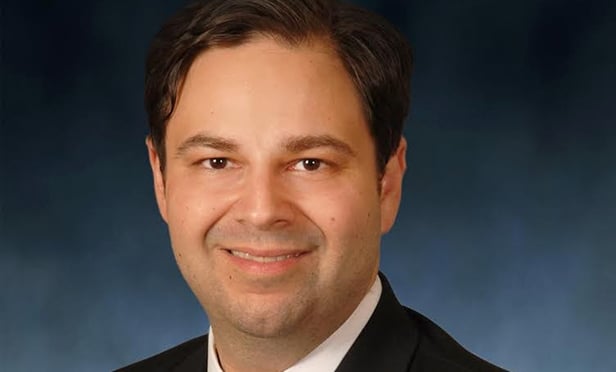NEW YORK CITY—This month, “The Full Nelson” has been turned over to Josh Harris, academic director of NYU’s Schack Institute, who shares his thoughts on Amazon’s search for their next headquarters.
The views expressed are the author’s own.
 Joshua Harris
Joshua Harris
In Amazon’s search for their second headquarters, they will consider a metro area with at least one million residents, close proximity to an international airport, mass transit, quality higher education, an educated workforce, and a business-friendly environment. Although only 65 metros areas would qualify, 238 cities responded. The fact that Amazon chose to be so public with their RFP process is unique. A lot of times when companies use RFPs, you rarely see them. They get secret nicknames like “Project Godzilla” by economic development officials trying to get big funding that they keep as trade secret until the deal is final and then made public. Here, Amazon made a statement to the effect of “No, we are going to put it out on the internet. We are going to tell everybody about it. We are going to create this great buzz and bidding war.” Their “first” headquarters is in Seattle, which is an expensive housing market similar to New York or San Francisco. They are growing and need to expand, given that they have lot of business lines diversifying headquarters locations will bring more opportunities. By using this RFP process, they are getting cities to show their cards. What sites do they have? Where could it be located? What are the benefits? Basically, they have to tell a story. Of course, let us not forget probably the biggest most important piece, what type of financial economic incentives is each city, county, or state willing to offer to lure that big Amazon prize?
Amazon states the winning city will receive 50,000 well-paying jobs and $5 billion of infrastructure investment over 8 million square feet. In Seattle, they estimate $38 billion of total economic benefit stemming from another 50,000 jobs created by other companies demonstrated by the fact that Fortune 500 companies in Seattle have multiplied from 7 in 2010 to 31 in 2017. It is certainly possible that Amazon’s exponential impact could be this dramatic. But it depends what city they choose. Seattle is a very dynamic market. It has had great airport expansion, and has become an alternate gateway to the West. Seattle originally benefited from San Francisco and Los Angeles being too crowded and too expensive. Thus, Seattle was kind of one of the next places. People said, “Hey, wait a minute. This is a nice standard quality of living.”
Amazon was majorly impactful in Seattle becoming so expensive. In fact, when I mentioned record high housing prices, it is no doubt that Amazon employees were one of the biggest drivers of that effect. So, the city that wins is going to get a lot of interesting side effects besides the direct economic benefit that Amazon could bring. There are the normal employment multiplier effects as the Amazon employees have to eat, go to doctors, and send their kids to school, which creates ancillary employment. It could be a multiplier effect of three to four, even five even times per each Amazon employee. There is also likely to be some type of clustering effect for other tech companies, other companies that want to steal Amazon employees, and companies that want to do business with Amazon. Amazon is absolutely a merchant, so companies that want to distribute and work through Amazon and the Amazon model are likely to want to locate near the HQ.
I think one of the most fun things about this Amazon RFP process is every real estate analytic person out there is having debates, doing rankings, and attempting to “forecast” Amazon’s top choice. For instance, Moody Analytics used a data driven approach and ranked Austin, TX first, followed by Atlanta and Philadelphia. Pittsburgh was an honorable mention. It may be a surprise to some that the New York metro area was only ranked #6; but this was probably an artifact of the way Moody’s defined a “city”.
New York came up as New York, Northern New Jersey and White Plains, which is a very large metropolitan area that they analyzed. If you are Amazon, you are going to be more concerned about that micro-geography and its inner connectivity within a broader metro. Some of these analyses do not necessarily go to that extent. They usually go to the extent to which they have statistics available. My guess is that Amazon would pick a city like Detroit or Newark. I picked these two cities as
they meet the basic criteria and seem somewhat plausible. Both are “aerotropolis” cities that have an airport as a centroid of activity that also has great connectivity. Detroit has got a great airport and is very affordable. Since it is a city that has never quite found its next thing after the Auto Industry’s troubles, Amazon could make a huge impact. Newark is a little bit more interesting because Newark is also affordable, is transit connected, and home to Newark Liberty International Airport that has some of the best service across the country and even globally because United has made a huge infrastructure investment. Furthermore, Newark’s airport is right outside of their downtown. Amazon could have a headquarters that is minutes to the airport. They are also minutes to Manhattan, so they could get all the Manhattan tech workers doing the reverse commute. Think about all the places that are well within a 30 minute drive. Further, picking Detroit or Newark would have great positive social impacts and thus good publicity for Amazon, which is a consumer-focused company at the end of the day.
No matter which city is picked, the RFP and ranking process is appearing as great catalyst for understanding what makes a city desirable for investment and hiring.

















 Copyright © 2024 ALM Global, LLC. All Rights Reserved.
Copyright © 2024 ALM Global, LLC. All Rights Reserved.